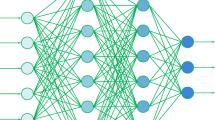Abstract
Fault localization is a key task on power systems operation and maintenance. When it comes to distribution networks, the problem is especially challenging due to the non-homogeneous characteristics and unique topology of each feeder. This paper presents a method based on gated graph neural network for automatic fault localization on distribution networks. The method aggregates problem data in a graph, where the feeder topology is represented by the graph links and nodes attributes can encapsulate any selected information such as operated devices, electrical characteristics and measurements at the point. The main advantage of the proposed solution is that it is immune to network reconfiguration and allows the use of a single trained model on multiple feeders. An experiment was conducted with faults simulated on 10 different feeders, all of them based on actual distribution feeders. The results shows that the model is able to generalize the correlations learned on training to correctly predict the fault region in most cases, even on a feeder it has not seen before.






Similar content being viewed by others
References
Aslan Y (2012) An alternative approach to fault location on power distribution feeders with embedded remote-end power generation using artificial neural networks. Electr Eng. https://doi.org/10.1007/s00202-011-0218-2
Cho K, van Merrienboer B, Gulcehre C, Bahdanau D, Bougares F, Schwenk H, Bengio Y (2014) Learning phrase representations using rnn encoder-decoder for statistical machine translation. arXiv:1406.1078
Das R, Madani V, Aminifar F, McDonald J, Venkata SS, Novosel D, Bose A, Shahidehpour M (2015) Distribution automation strategies: evolution of technologies and the business case. IEEE Trans Smart Grid 6(4):2166–2175. https://doi.org/10.1109/TSG.2014.2368393
Dashtdar M (2018) Fault location in distribution network based on fault current analysis using artificial neural. Network 1:18–32
Dehghani F, Nezami H (2013) A new fault location technique on radial distribution systems using artificial neural network. In: 22nd international conference and exhibition on electricity distribution (CIRED 2013), pp 1–4. https://doi.org/10.1049/cp.2013.0697
Ekanayake J, Liyanage K, Wu J, Yokoyama A, Jenkins N (2012) Smart Grid: Technology and Applications, 1st edn. John Wiley & Sons Ltd. https://doi.org/10.1002/9781119968696
EPRI: The Open Distribution System Simulator (OpenDSS). https://www.epri.com/#/pages/sa/opendss?lang=en
Farias PE, de Morais AP, Rossini JP, Cardoso G (2018) Non-linear high impedance fault distance estimation in power distribution systems: a continually online-trained neural network approach. Electr Power Syst Res. https://doi.org/10.1016/j.epsr.2017.11.018
Gori M, Monfardini G, Scarselli F (2005) A new model for learning in graph domains. In: Proceedings of the international joint conference on neural networks. https://doi.org/10.1109/IJCNN.2005.1555942
Gururajapathy SS, Mokhlis H, Illias HA (2017) Fault location and detection techniques in power distribution systems with distributed generation: a review. https://doi.org/10.1016/j.rser.2017.03.021
IEEE (2014) IEEE Guide for Determining Fault Location on AC transmission and distribution lines IEEE power and energy society. In: IEEE Std C37.114-2014 (revision of IEEE Std C37.114-2004). https://doi.org/10.1109/IEEESTD.2015.7024095
Jarventausta P, Verho P, Partanen J (1994) Using fuzzy sets to model the uncertainty in the fault location process of distribution networks. IEEE Trans Power Deliv 10(1109/61):296278
Kingma DP, Ba J (2014) Adam: a method for stochastic optimization. arXiv:1412.6980
Li Y, Tarlow D, Brockschmidt M, Zemel R (2015) Gated graph sequence neural networks. arXiv:1511.05493
Meira PCM (2018) DSS python. https://github.com/dss-extensions/dss_python
Northcote-Green J, Wilson R (2017). Control and automation of electrical power distribution systems. https://doi.org/10.1201/9781315221465
Pineda FJ (1987) Generalization of back-propagation to recurrent neural networks. Phys Rev Lett. https://doi.org/10.1103/PhysRevLett.59.2229
Saha M, Das R, Verho P, Novosel D (2002) Review of fault location techniques for distribution systems. In: Power systems and communications infrastructures for the future. Beijing, China
Scarselli F, Gori M, Tsoi AC, Hagenbuchner M, Monfardini G (2009) The graph neural network model. IEEE Trans Neural Netw. https://doi.org/10.1109/TNN.2008.2005605
Yang F, Donde V, Li Zhao Wang Zhenyuan (2012) Advances in power distribution system management technology. In: Wang L (ed) Modeling and control of sustainable power systems: towards smarter and greener electric grids, pp 155–191. Springer, Berlin. https://doi.org/10.1007/978-3-642-22904-6_6
Acknowledgements
The authors would like to thank Pró-Reitoria de Pesquisa (PRPq) of the Universidade Federal de Minas Gerais (UFMG), FAPEMIG, CNPq, and CAPES; Companhia Energética de Minas Gerais (CEMIG) for providing data from its distribution system used in the experiments, and Eng. Ezequiel Campos Pereira of CEMIG’s Electrical System Planning and Expansion Engineering department, for the support with the simulations.
Author information
Authors and Affiliations
Corresponding author
Ethics declarations
Conflict of interest
The authors declare that they have no conflict of interest.
Additional information
Publisher's Note
Springer Nature remains neutral with regard to jurisdictional claims in published maps and institutional affiliations.
Rights and permissions
About this article
Cite this article
de Freitas, J.T., Coelho, F.G.F. Fault localization method for power distribution systems based on gated graph neural networks. Electr Eng 103, 2259–2266 (2021). https://doi.org/10.1007/s00202-021-01223-7
Received:
Accepted:
Published:
Issue Date:
DOI: https://doi.org/10.1007/s00202-021-01223-7




